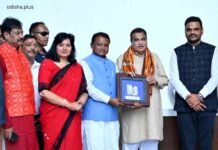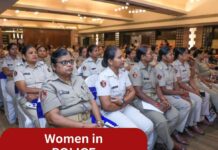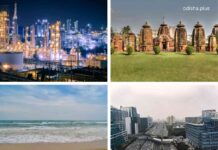Prof Ujjwal K Chowdhury
Dissent is integral to any democracy. More so in India, as the larger section of the masses have nothing to lose but their poverty and dispossessed status. There had been a series of civil society dissent and movements in India. To my memory, anti emergency JP Movement in 1970s, calling for Sampoorna Kranti, and more recently, the Anna Movement earlier in this decade have been two really national civil society dissent and movement with echoes heard world-over.

Rise of anti CAA-NRC Movement
And now we have the civil society uprising to protest against the discriminatory CAA and the feared possible NRC. The first has legalized seeking citizenship in India by religion, and the second one might call for past documents of several decades from those who are already citizens and voting, and thereby turning many into stateless citizens, due to lack of decades old documents, as in Assam now. And those who would be most affected shall be Muslims, tribals and poor people who cannot produce documents of two or three generations. Such an exercise can be questioned in its basics when 96% of the people already have a multi-purpose Adhaar card and those who are in voting age have their voters’ identity card.
Civil society protest usually has an emotive but national issue at its core, which the issue of citizenship under question has provided. It usually starts off with youths powering it, but some intellectuals adding credibility to it. The current round started from the Delhi and the Aligarh universities (JNU, DU, Jamia, AMU) and now spread across India. Historians like Ram Chandra Guha, writers like Arundhati Roy, celebrities like Farhan Akhtar or Sushant Singh or Sadaf Zafar, and hundreds of others from academics and cultural fields are writing, speaking, blogging, rallying and even getting detained protesting against CAA-NRC.

State Response to Protests:
Civil society protest usually has four reactions from the rulers who are the target of the protest. First, ignore. This was for a short period here, and the Indian government thought that only Assam was protesting. Second, repress. This has been a protracted one for more than two weeks now. Students in Jamia and AMU, and civilian protesters in Uttar Pradesh, Assam and Karnataka have already experienced enormous state repression on them leading to many being maimed, blinded, injured and by now at least 26 even killed. After denying any police bullet firing, now police in UP and Karnataka have accepted police firing when confronted with actual visuals of the same. Jamia, Aligarh, Muzaffarnagar, Guwahati and Bijnor have seen highest amount of police atrocities so far.

Third, civilian violence to confuse and ill-repute the protesters. Often when protests grow stronger, those who are protested against infiltrate their agents of violence among the protesters. This is an old tactic world-over. It is important to note that violence during protests and police repressions has happened only in UP, Karnataka, and Assam, all ruled by BJP, and in Delhi where the local Police is under central BJP led government. All other cities have seen peaceful protests, and now even the protests in Bengaluru in the last two days have been peaceful. A section of the Bengaluru Police has itself protested against wanton violence on protesters earlier. Violence in West Bengal and Gujarat had some mischievous elements in it, but have been contained now, and some hoodlums damaging railway property in Bengal were caught and were found to be agent provocateurs of BJP later (they are in police custody now). The state repression is also through intermittent shut-down or slow-down of the internet in various parts of the nation, which is still ongoing. China, that controls Hongkong, has not resorted to shutdown of the internet even once during the last 4 months of protests in Hongkong, while India has already crossed a hundred instances of short and long duration internet closure only in 2019 so far.
Fourth, publicity blitzkrieg to further confuse the masses or build an alternative narrative will come next. In the current case, this has started already through the use of the pliant section of the Indian media, largely the Hindi newspapers and most television channels (not all though). Now, a major advertisement driven blitzkrieg will hit the Indian media, hoardings and social media from the government end which will mock at the basic arguments of those who are protesting. It will try to paint protesters as fools who are scared of their doubtful citizenship, while those who are confident of the same are cool and at peace. It will demonize the very act of dissent, its expression, and protest on streets.

Civil Society Response Ahead:
First, it must remain non-violent in spite of provocations by the government agencies and some ruling party goons. Second, it must be a movement of India and Indian people from all backgrounds, not just of the Muslims. In fact, Muslim parties and groups should refrain from their own programs and mingle with common protests. Third, the movement must focus on protecting the constitution and its values and not become sectarian. It is good to see that reading of the Preamble of the Constitution has become mandatory in every protest meet now, and a Preamble of the movement itself has also come out and gone viral. Fourth, the movement has to focus on the falling economy, growing joblessness, rising prices, sale of government assets incurring heavy losses (BPCL, Indian Airlines, MTNL-BSNL, etc), closure of factories and Small and Medium enterprises in a large number, and fall in GST etc. That the CAA-NRC together aim to divert attention from a falling economy as much as isolating the Muslim minorities must be noted emphatically. Fifth, the movement must also be for democracy and to preserve the right to protest peacefully and against the brutal use of police force on students as done in Assam, Jamia, AMU, protect citizens’ rights to information and use of internet, etc.
Finally, the civil society must mobilize a large number of lawyers, social workers and trauma mitigation professionals to handle the crisis pro bono across Delhi, UP, Assam and Karnataka. Also, the nation has a treasure of films, songs, dance, literature, art talking of Hindu-Muslim-Others’ synthetic culture and this needs a strong share and reuse across the nation now from the civil society (like concerts for amity and shared culture). State and district level civil society bodies need to come up calling for protecting human rights and communal bonhomie and bringing especially the subaltern sections of all communities on common platform.

Political Opposition Response Ahead:
Mamata Banerjee led TMC has been the first and foremost party to protest and for a week every day. The Left parties did a massive protest on 19th across India, followed by DMK and Congress more recently. JDU has spoken against NRC, Akali Das has asked for including persecuted Muslims too in CAA, and Shiv Sena after supporting in Lok Sabha walked out in the Rajya Sabha when the bill was put up. The parties with Muslim and tribal linkages have all opposed vociferously. Chief Ministers of Bengal, Delhi, Kerala, Odisha, Punjab, Andhra Pradesh, MP, Rajasthan, and Chattisgarh have stated that they would not execute CAA or NRC in their states. In general, BJP stands isolated, though still arrogant, on the vexed issue of CAA-NRC and that led to PM lying in Delhi rally recently: “No discussions were done on NRC; no detention camp in India; Police action in the interest of the ordinary people, etc”.
As is evident, the students, followed by the larger civil society of India, have preceded the opposition political parties, some of whom apparently fell in line only after seeing the raging dissent among people. The main opposition party, Congress, has actually tailed the movement and not led it, and now the top leaders are being prevented by police to go and meet victims of police atrocities in UP. The opposition needs to take up the cases of legal and medical support, material and moral support to the victims of police and hoodlum violence at the earliest (which civil society members are doing at a limited scale).
The Opposition needs to make common platforms of parties, 16 non-BJP CMs and caucus within the Parliament to oppose changes in the fundamental constitutional character, communal profiling and discriminatory citizenship drives. Actually, the RSS agenda of having Hindu Rashtra also kills rationale for a multi-party democracy a la a Nazi state.

Outcome of the Ongoing Impasse:
The youth and the poor of all communities coming closer is a possible outcome of this entire movement. Waving national flags in public protests, collective reading of Preamble, calling to protect Indian constitution are encouraging signs to which the Hindutva brigade will have no response ultimately.
The Maharashtra failure of BJP and a resounding defeat in Jharkhand have provided a fertile ground to consolidate non-BJP forces to take on the ruling party in Delhi, Bihar and Bengal next. This movement has already given a fillip to those possibilities. Electorally there has to be a rebuff to the rulers to make fight for democratic polity alive. A broad-based coalition of various forces may evolve to combat the ruling party going ahead.
The movement has also opened possibilities of new social alliances among various groups, new literature art and culture to flower in the backdrop of state repression and sectarian violence of Hindutva forces, and a new found spirit among the youth facing a bleak economy, falling standards of education and opportunities of gainful employment.
The author is an awarded academic, a regular columnist, and an analyst on television.






















